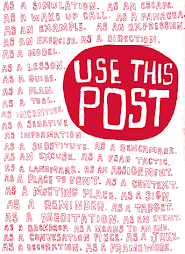Original Tweet: https://twitter.com/mbauwens/
So good. “@cvharquail: Fabulous, provocative podcast about leaders, communities and belonging. v @gpetriglieri http://t.co/1QJGaeHKST”
Original Tweet: https://twitter.com/umairh/
when your mother says she's fat
https://medium.com/human-parts/bf5111e68cc1
ian interview
http://ctrnetwork.com/events/sharing-the-best-ideas
http://www.thenation.com/
Here's Exactly How Much the Government Would Have to Spend to Make Public College Tuition-Free -http://t.co/nkxC4w9qyJ
Original Tweet: https://twitter.com/
Original Tweet: https://twitter.com/
 George Siemens (@gsiemens)
George Siemens (@gsiemens)1/2/14 7:43 AM
Reasonably short and accessible history of databases and mistakes being re-made with NoSQLopensourceconnections.com/
- Index Dependencies: What’s an index? This data model does not mention indices. Indices are, for better-or-worse, a knob that gets tuned at a place the application does not interact with the database.
And from that apply those lessons to today’s NoSQL databases. Are today’s databases repeating mistakes of the past? Or are they filling an important niche (or both?).
Codd proposed to get around these limitations by focusing on a specific abstraction: relations. A relation is simply a tuple of elements. The ith element of each tuple is a member of some set, known as that element’s domain. Perhaps a given element’s domain is the set of users, user ids, possible movies to rent, etc. So for our videos, a tuple might look like:
(user=u, address=a, list of movies rented=l)
Or in other words
(doug, 1234 Bagby St, [Top Gun 3.99, Terminator 12.99])
One can interpret this relation to “mean” any number of things. We might equate this to a statement that “Doug rents Top Gun at 3.99 and Terminator at 12.99” or “Doug lives at 1234 Bagby St”.
Adding to this, Codd proposes an idea known as normalization. Codd only touches on the basics of normalization in this first paper. Suffice it to say, one important goal of normalization is to create flatter and less-redundant relations, creating simpler sentences from our relations. In Codd’s first-order normalization, what he introduces in his paper, we’d rather say “Doug rents Top Gun at 3.99” and “Doug rents Terminator at 12.99” instead of including both movies in the sentence. In relation terms, this would look like:
Users Relations
(user=doug, address=1234 BagbySt)
Movies-Rented Relations
(user=doug, movie=Top Gun, price=3.99)
(user=doug, movie=Terminator, price=12.99)
With simpler and normalized relations, we can use Codd’s new JOIN operator that can derive relations from other, simpler and normalized relations. This is extremely powerful. In other words with JOIN we can construct knowledge from smaller units of knowledge
In short, Codd created a beautiful abstraction that turned out to be reasonable to implement. Instead of building on what had been done with databases, he went to the roots of predicate calculus and created a clean and beautiful way of interacting with data.spot on.. for what we need to be doing in the world..new deal.. deal over..all cards/sectors back in.. fresh/old eyes/sesnses...no...?It’s a pretty singular and daring achievement in fact to assert “this is the abstraction we should use” and have it be largely successful. There was not much anticipating Codd’s invention of relational databases. It wasn’t, as is common today, a minor innovation on previous innovations. Instead it was simply Codd’s vision. Pretty cool stuff!huge.ginormously small.doable.what we need/crave...no...?t wasn’t, as is common today, a minor innovation on previous innovations. Instead it was simply Codd’s vision. Pretty cool stuff!The wrench-in-the-spokes of-course came when we decided to build horizontally scalable systems “webscale” as all the kiddies say. Doing a JOIN over a distributed system turns out not to scale well. Because of this, we started to see old themes reintroduced, specifically the denormalized, hierarchical databases of yore in the form of many of today’s NoSQL stores.Most importantly, when using a NoSQL store, your opportunities for ad-hoc querying becomes much more limited. Whereas relational databases hold sacred the goal of allowing you to define more complex information from more primitive information, NoSQL databases require performing massive batch processing through map-reduce to create derived information.Moreover, the lack of normalization requires potentially large amounts of data duplication. If tracking users renting videos in a hierarchical data store, how does one update the inventory successfully? If users own videos, does this require a map reduce job to visit every user record and update the count. Will this occur atomically across all the records?In short, denormalization stinks!Whereas relational databases hold sacred the goal of allowing you to define more complex information from more primitive information, NoSQL databases require performing massive batch processing through map-reduce to create derived information.ie... people depending on and/or oppressed by elite/aged/history/comfort....databases.. huge to deep address ness moving us back to a culture of trust.. - no-strings/unconditional nessmore deep address ness.. avoiding danger of just one story ness




































